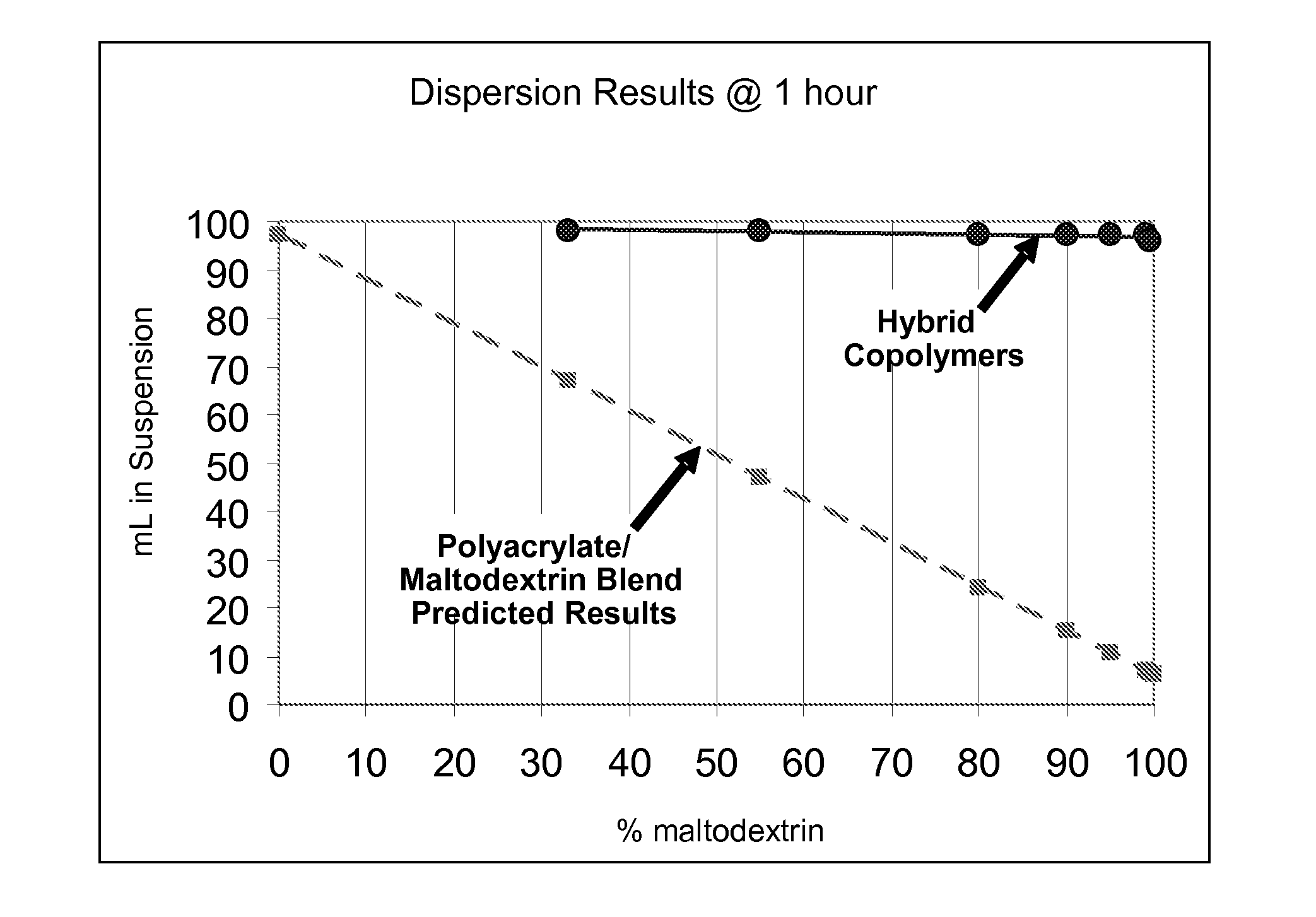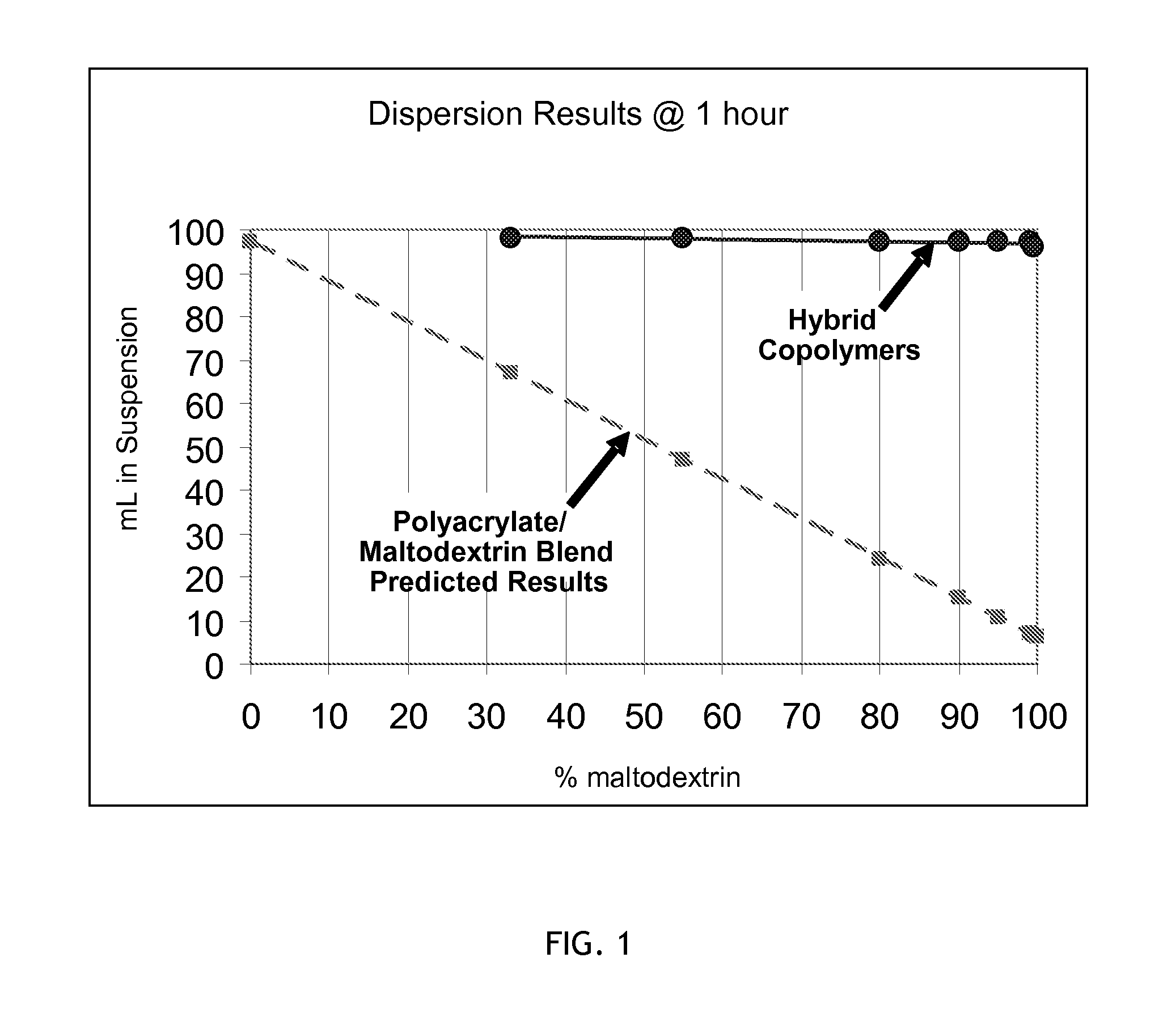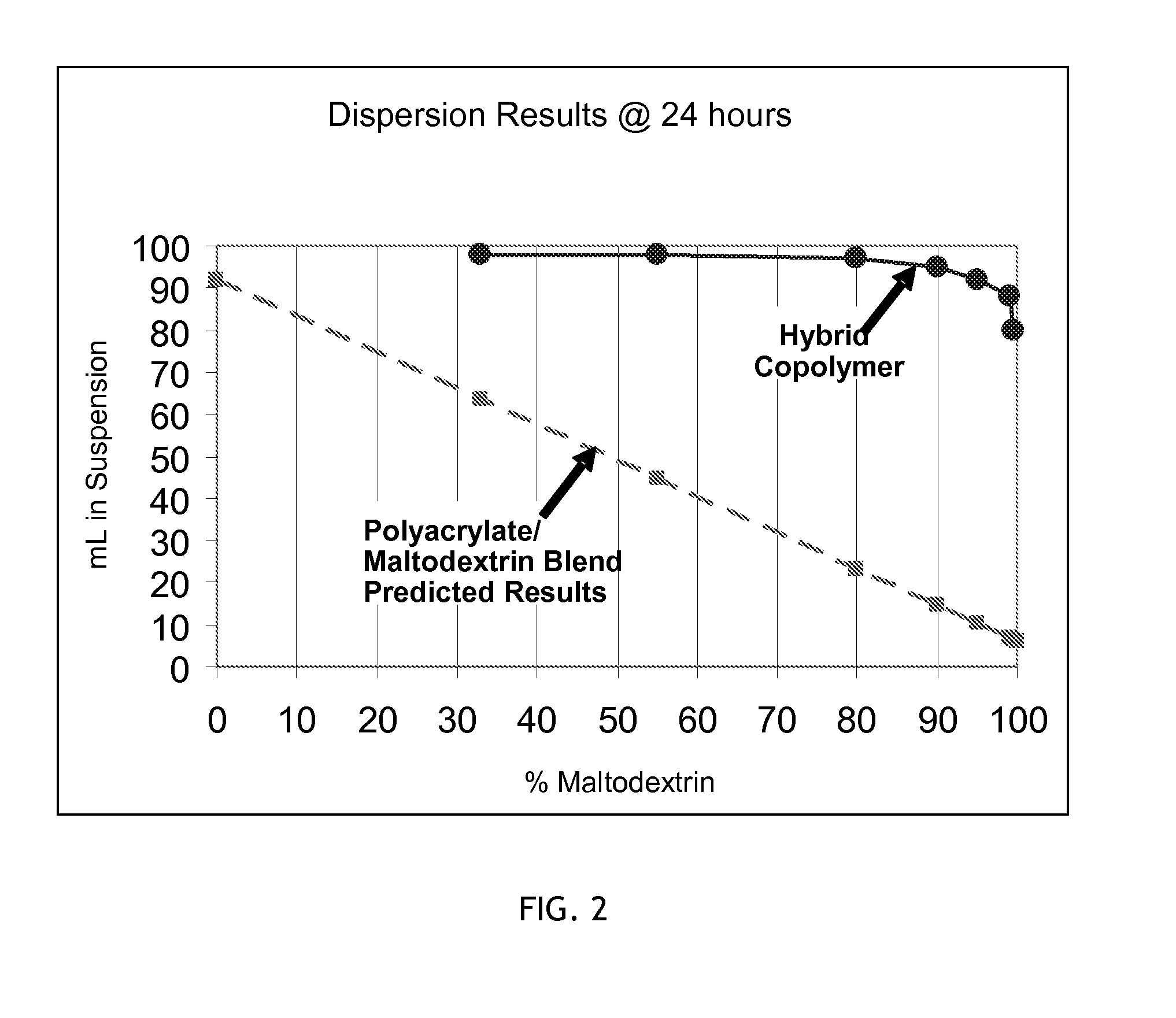Hybrid copolymer compositions
a hybrid copolymer and composition technology, applied in the field of hybrid copolymer compositions, can solve the problems of inefficiency, potential negative effect on performance, and difficult control of redox processes, and achieve the effect of maintaining the functionality of the synthetic polymer portion and high level of naturally derived hydroxyl containing chain transfer agents
- Summary
- Abstract
- Description
- Claims
- Application Information
AI Technical Summary
Benefits of technology
Problems solved by technology
Method used
Image
Examples
example 1
Synthesis of Anionic Hybrid Copolymer Composition with 80 Weight Percent Chain Transfer Agent
[0099]200 grams of maltose as a chain transfer agent (Cargill Sweet Satin Maltose 80% aqueous solution, available from Cargill Inc., Cedar Rapids, Iowa) was initially dissolved in 200 grams of water in a reactor and heated to 98° C. A monomer solution containing 40 grams of acrylic acid in 120 grams of water was subsequently added to the reactor over a period of 90 minutes. An initiator solution comprising of 6.6 grams of sodium persulfate in 40 grams of water was added to the reactor at the same time as the monomer solution over a period of 90 minutes. The reaction product was held at 98° C. for an additional 60 minutes. The polymer was then partially neutralized by adding 20 grams of a 50% solution of NaOH. The final product was a light yellow solution with 31% solids.
example 2
Synthesis of Anionic Hybrid Copolymer Composition with 95 Weight Percent Polysaccharide Functionality
[0100]190 grams of maltodextrin as a polysaccharide chain transfer agent (Cargill MD™ 01918 dextrin, spray-dried maltodextrin obtained by enzymatic conversion of common corn starch, available from Cargill Inc., Cedar Rapids, Iowa) was initially dissolved in 200 grams of water in a reactor and heated to 95° C. A monomer solution containing 10 grams of acrylic acid dissolved in 75 g of water was subsequently added to the reactor over a period of one hour. An initiator solution comprising of 0.5 grams of sodium persulfate in 25 grams of water was added to the reactor at the same time as the monomer solution but over a period of 1 hour and 10 minutes. The reaction product was held at 95° C. for an additional 30 minutes. The polymer was then partially neutralized by adding 5 grams of a 50% solution of NaOH dissolved in 40 grams of water.
example 3
Synthesis of Anionic Hybrid Copolymer Composition with 85 Weight Percent Maltose Functionality
[0101]213 grams of maltose as a chain transfer agent (Cargill Sweet Satin Maltose 80% aqueous solution, available from Cargill Inc., Cedar Rapids, Iowa) was initially dissolved in 180 grams of water in a reactor and heated to 98° C. A monomer solution containing 30 grams of acrylic acid in 60 grams of water was subsequently added to the reactor over a period of 90 minutes. An initiator solution comprising of 6.6 grams of sodium persulfate in 40 grams of water was added to the reactor at the same time as the monomer solution over a period of 90 minutes. The reaction product was held at 98° C. for an additional 60 minutes. The polymer was then partially neutralized by adding 15 grams of a 50% solution of NaOH and the final product was a clear amber colored solution.
PUM
| Property | Measurement | Unit |
|---|---|---|
| wavelength | aaaaa | aaaaa |
| temperature | aaaaa | aaaaa |
| size | aaaaa | aaaaa |
Abstract
Description
Claims
Application Information
 Login to View More
Login to View More - R&D
- Intellectual Property
- Life Sciences
- Materials
- Tech Scout
- Unparalleled Data Quality
- Higher Quality Content
- 60% Fewer Hallucinations
Browse by: Latest US Patents, China's latest patents, Technical Efficacy Thesaurus, Application Domain, Technology Topic, Popular Technical Reports.
© 2025 PatSnap. All rights reserved.Legal|Privacy policy|Modern Slavery Act Transparency Statement|Sitemap|About US| Contact US: help@patsnap.com



